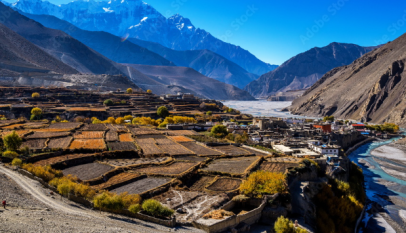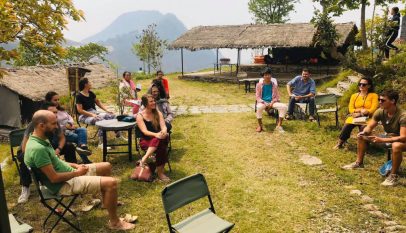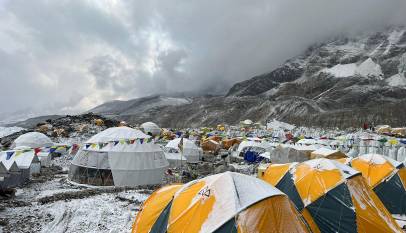Duradanda: Confluence of history, culture, and nature
- Khim Ghale

Duradanda is a unique confluence of history, culture, and nature. Before the establishment of the federal system in the country and the formation of a new local level, Duradanda mauja of Lamjung district had six village development committees including Purankot, Neta, Duradanda, Chandreshwor, Sindure, and Dhuseni. These areas are now included in Benshishahar, Madhyanepal, and Sunderbazar municipalities.
According to the latest census, Duradanda is the habitat of a minority indigenous Dura community with a population of 5,394. This area is not only the main settlement of the Dura community but also an area with historical significance. However, this region is not only inhabited by Duras but also has a larger presence of other communities too.
 Lately, various activities have been launched to develop tourism by highlighting the history, nature, and culture of Duradanda. Accordingly, three homestays have been established in three settlements of Dura, namely Sindure-Thuloshwara-Duragaun, Turlungkot, and Khaje Dura Gaun.
Lately, various activities have been launched to develop tourism by highlighting the history, nature, and culture of Duradanda. Accordingly, three homestays have been established in three settlements of Dura, namely Sindure-Thuloshwara-Duragaun, Turlungkot, and Khaje Dura Gaun.
Historical Legacy

Dura community and Duradanda have a special significance in the history of Nepal. In 1550 BS, a group led by Khaje Dura and Laxman Dura had met with King Kulmandan Shah of Kaski and brought their youngest son Yasobrahma Shah to be the king of Lamjung.
Yasobrahma Shah was proclaimed as the king of Lamjung by marching around a stone here. Even before that, under the leadership of the Duras, Kalu Shah was brought from Kulmandan Shah to be the king. But the Ghale rulers of Lamjung at that time had assassinated him with the support of their allies. So, they brought Yasobrahma again.
“For the second time, it seems to have been brought with special care. There are a lot of rumors about where he was brought, how he was hidden, and how the Sindur Jatra (Coronation) was done,” said Deb Dura, president of Dura Service Society. According to him, the new king was chosen because they were dissatisfied with the then rulers.
Sindure Dhunga and Khaje Dura Park
The stone on which Yasobrahma Shah was proclaimed king is called Sindure Dhunga (stone). The stone is located on a hill between Thuloshwara village and Turlungkot. It has been protected by the Dura community. The place where this stone is located has an altitude of 1500 meters.

Similarly, a park has been built in memory of Khaje Dura, a hero associated with this history. A statue of Khaje Dura has also been made in this park in Chiyanpata of Duradanda. His statue shows a small child in Bhangra (clothes). It is said that Khaje Dura had brought Yasobrahma Shah by hiding him in his bhangra.
Three forts
The three forts on the hill above the village of Turlungkot bear witness to the connection of the Duras with their rule. Named High, Middle, and Lower Gadhi (fort), the three forts not only tell the history of the Dura but also bear witness to heroism and courage.
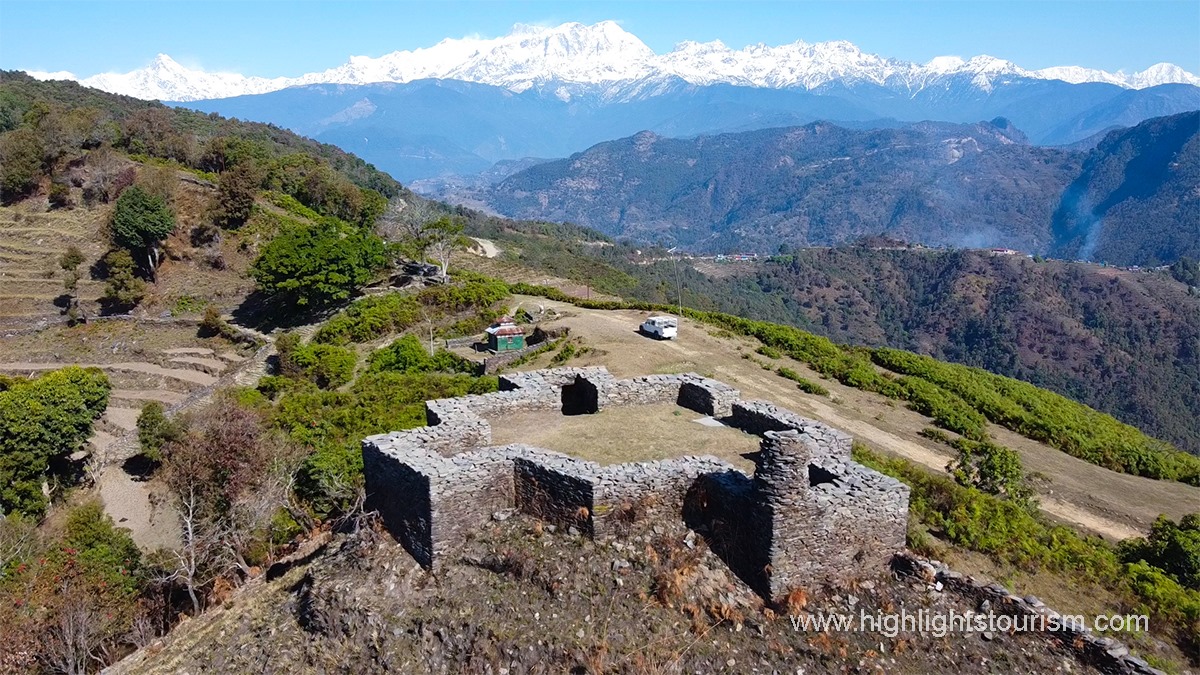
According to Gokul Dura, a retired Nepal Army officer, these forts were built by the Duras who was in charge of security in the southern part of Lamjung State during the Baishe and Chaubishe reign. These forts are estimated to have been built around the 14th-15th century. These forts have been rebuilt. The forts seem to have been built by the ancestors of Dura based on their native knowledge.
Turlungkalika temple

The most important religious site in Duradanda is the Turlungkalika Temple. It is said that Shakti Peeth was established by Yashobram Shah by bringing it from Bhirkot, Kaski. Later temples were built here at different times. It was rebuilt by the Department of Archeology after it collapsed in the 2015 earthquake.
Devotees flock to this temple on Dashain and Chait Dashain. At other times also special pujas and punch sacrifices are performed. There are Brahmin priests for the two Dashain and Panchabali , while the general worship at other times is performed by the Dura priest. The pigs offered during Panchabali are offered at Bhairav Than outside the temple premises. There are also shelters for the convenience of devotees. This is a place of archeological importance.
Narkhu Bhagwan Than
There are other religious places in Duradanda associated with the faith of the locals. One of them is the place of Lord Narkhu. Narkhu means Lord Shiva in the Dura language. The people of Dura and other communities, who live here worship it when there is no rain. Its rituals and beliefs are also different. It is customary to sacrifice the buffalo alive by slicing its throat and offer blood. There is a belief that after offering that blood to other gods along with the Nartkhu, water is poured in the form of rain to clean the pollution of blood. The elders here say that it is not just a belief but a truth.
Similarly, another center of faith is Shweta Bhairav, locally called Gandbaj where worshipping is done for the protection of the village and the well-being of the villagers.
Panoramic scenery
 Duradanda is also a suitable place for sightseeing. From these hills, one can enjoy the view of Machhapuchchare, Annapurna, Lamjung, Himalchuli, Manaslu, and other mountains as well as the beautiful green Mahabharata range to the south. The red twilight of the sun on the top of the mountain at sunrise and sunset is even more beautiful.
Duradanda is also a suitable place for sightseeing. From these hills, one can enjoy the view of Machhapuchchare, Annapurna, Lamjung, Himalchuli, Manaslu, and other mountains as well as the beautiful green Mahabharata range to the south. The red twilight of the sun on the top of the mountain at sunrise and sunset is even more beautiful.
Manang Danda

Manang Danda is a place that can be seen from a 360-degree angle after climbing the hill for about 15 minutes from Thuloswara village of Duradanda. At an altitude of about 1500 meters, this mountain has beautiful snow-capped mountains to the east and north and green hills to the southwest. Although a local had built a house here, it is not inhabited now.
Daduwa Danda
The highest point of Duradanda is Daduwa Danda. At an altitude of 1600 meters, this place has a large meadow. A big fair is held here in Chait Dashain. This is also the place where the goats are sacrificed and picnic spots have also been set up. A football ground has been dug just below it. Former president of Dura Sewa Samaj Lok Bahadur Dura says that efforts are being made to make it an international size football ground. This mountain is also suitable for sightseeing. From here, you can see the fascinating Himalayan range from east to north and the green hills to the south-west. Pokhara is also visible from this hill, but very far away.
Culture

The minority Dura community is rich in culture. They have still preserved their original culture. They entertain the visitors in a homestay by showing them cultural programs.
The identity of Duradanda is Thado Bhaka. Late folk singer Deu Bahadur Dura of Dura Dandakai is said to have laid the foundation of this folk song. Thado Bhaka presented by Deu Bahadur Dura is also part of the national folk song now. Later, it is said that the same Bhaka was spread by Panchkher Gurung and others. The house of Deu Bahadur, the creator of Thado Bhaka, has now been developed as a museum.
Similarly, other cultural components include Ghantu, Sorathi, Dohori, and Zhaure. Barhamase and Kusund Ghantu have been shortened to show to the guests. Sorathi and Zhaure are also shown to the guests. Along with this, the dance of the mother group makes the guests dance.
Community homestays

Three community homestays including Sindure-Thuloswara-Duragaun, Turlungkot, and Khajedura village have been established in Duradanda. Sindure-Thuloswara-Duragaun Homestay is returned to the north. When you wake up in the morning after staying in the homestay here, you can see the snow-capped peaks.

Homestays in Turlungkot and Khaje Dura are turning to the south. As soon as you get up from here, you can see green hills. You have to walk 10-15 minutes to climb the mountain to observe the mountain ranges. Climbing up a steep hill in the morning not only enhances the scenery but also enhances the physical vitality.
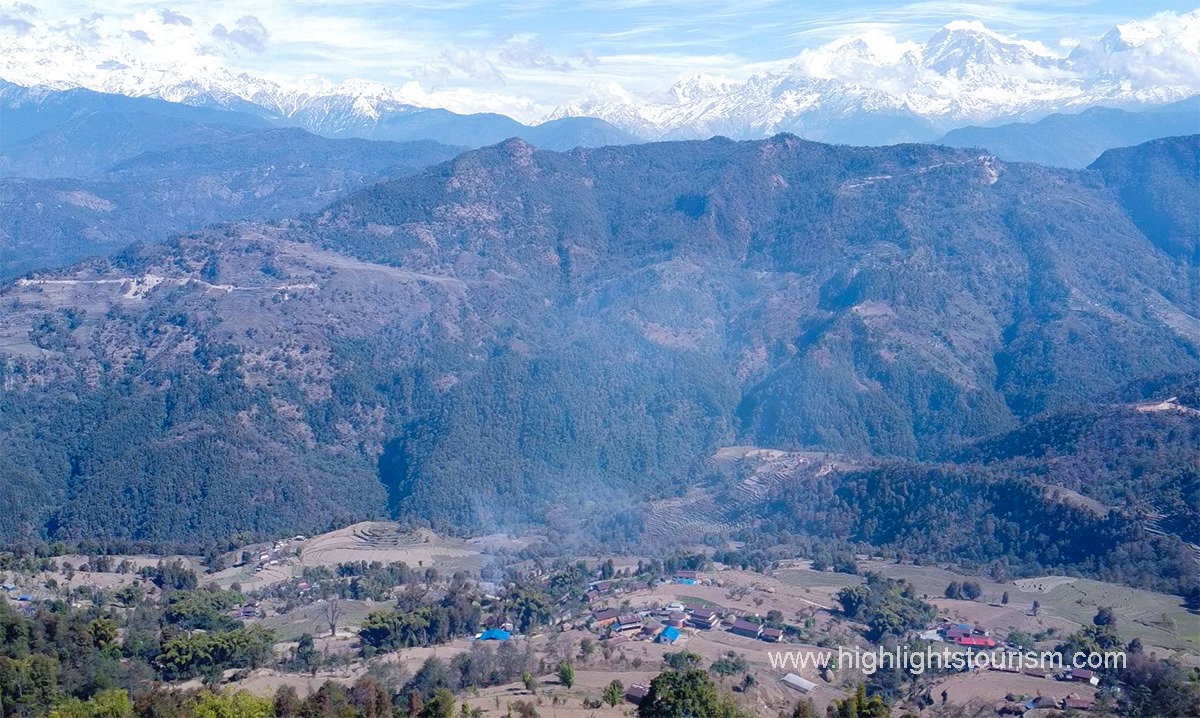
Infrastructure has been built in all three community homestays to accommodate 35 to 40 guests. Guest rooms with white sheets are designed to accommodate two people in one room.
Food and Accommodation

Homestays in Duradanda offer a taste of Nepali food made from local organic products. Paddy, vegetables, pulses as well as other delicious dishes of the same production are also made. Cell bread, vegetables, roasted corn, soybean, etc. are available as lunch or snacks.
Local chicken meat, Kodoko Dhido, wild Nihuro vegetable, Gundruk, and Sinki pickles make your mouth water. Seasonal fruits are also available. Cow/buffalo milk, Mohi, ghee, and locally produced honey can also be tasted. Kodo’s local liquor is available in little quantity for drinkers.
Other attractions
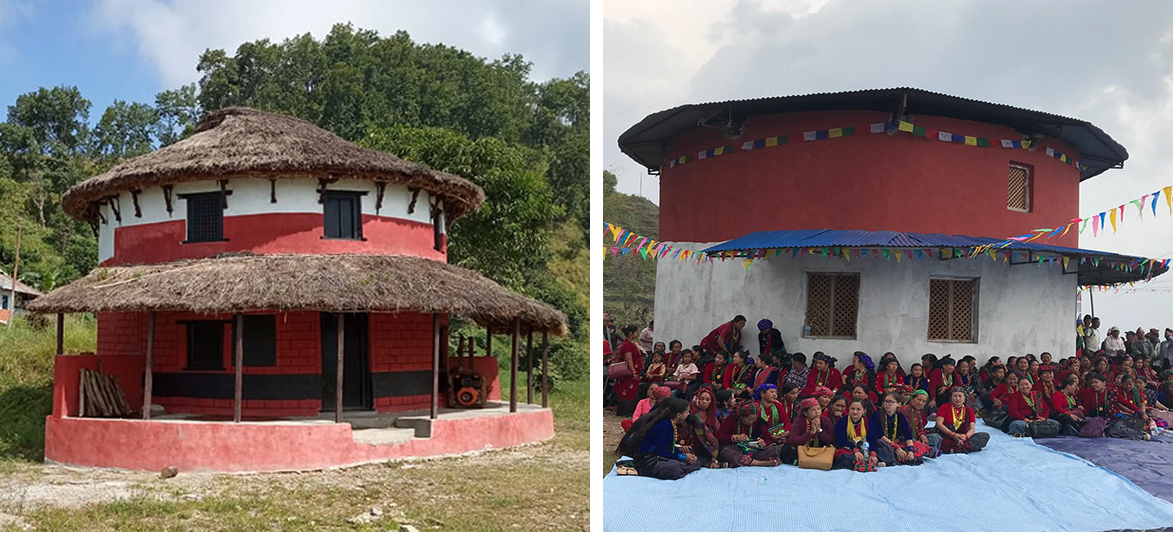
A lot of work has been done for the development of tourism and community in Duradanda. Guests can also enjoy watching them.
Among them is Chandreshwor High School in Chiyanpata, one of the oldest in Lamjung, Deu Bahadur Dura Memorial Museum in Bardhan village of Handikhola, Hesa Hoitung Buddhist monastery in Kaneshwar of Neta village, and a community-based monitoring and information system resource center under construction in Turlungkot.
The Duras belong to the less populated tribal community in Nepal. Let’s visit Duradanda once again to see the culture, way of life, historical-archeological sites as well as the beautiful natural scenery of the Dura people who have played a historic role in making the history of Nepal. This will make your journey fruitful and enjoyable as well as strengthen the efforts of the Dura community in the development of the community through tourism.
How to reach?
 Public buses are operated for Duradanda from Kathmandu, Pokhara, and Benshisahar. Those who go from Pokhara can go through Dumre or come directly from Pokhara, but the road is not good enough as it is not yet blacktopped. Those who go from Besinshahar can go through Siundibar and Sundarbazar. On the other hand, you can also go through the village town via Bakhrejagat and Bhanjyang.
Public buses are operated for Duradanda from Kathmandu, Pokhara, and Benshisahar. Those who go from Pokhara can go through Dumre or come directly from Pokhara, but the road is not good enough as it is not yet blacktopped. Those who go from Besinshahar can go through Siundibar and Sundarbazar. On the other hand, you can also go through the village town via Bakhrejagat and Bhanjyang.
Contacts for Homestays:
1. Dhruba Dura, Chairperson – Sindure Thuloshwara Dura Gaun Homestays – 9856040515
2. Jit Bahadur Dura, Chairperson – Turlungkot Homestays – 9845359054
3. Amar Jung Dura, Chairperson – Khaje Dura Gaun Homestays– 9846995739
Mustang as international tourist destination
Luring Mustang as one of the top tourist destinations in Nepal involves highlighting its u…






